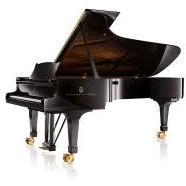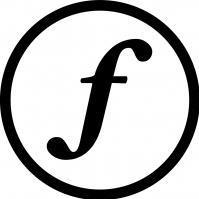-
Posts
575 -
Joined
-
Last visited
-
Days Won
12
bryla last won the day on June 4 2020
bryla had the most liked content!
About bryla

- Birthday October 27
Contact Methods
-
Website URL
http://www.bryla.dk
Profile Information
-
Biography
Born, raised, playing music
-
Gender
Male
-
Location
On the countryside
-
Occupation
Musician, music teacher
-
Interests
Japan
-
Favorite Composers
Mozart, Beethoven and so on
-
My Compositional Styles
The ones that fit
-
Notation Software/Sequencers
Sib7, Logic8
-
Instruments Played
Keyboards and Theremin
Recent Profile Visitors
4,714 profile views
bryla's Achievements
-
Jupiter from The Planets by Gustav Holst.
-
Thanks. Yes this is based on the orchestrational principles of Jupiter. I tried to expand by displacing the chord a couple of times.
-
Could you upload the score as a PDF?
-
I was just confused as to why it was posted in the category of soundtracks. 🙂
-
And for what was this composed?
-
Not necessarily. I would suggest you either way try a neutral tree setting without precedence and breeze. The secret to orchestral mixing really is to stay out of the way. There's a reason no orchestral film music mixing engineers don't use it and have tree mics as dominant.
- 8 replies
-
- orchestral
- midi
-
(and 2 more)
Tagged with:
-
So what is dominant your brass? I would suggest the tree to be dominant there as well. Close micing brass gives too much low and high.
- 8 replies
-
- orchestral
- midi
-
(and 2 more)
Tagged with:
-
It's a fine starting point. Remember to come back to it often as a reference when you start dealing with panning and all. There's a lot of room in the writing alone so I wouldn't stray too far away from a good set of tree mics. Is this Ashton's MIDI? https://bit.ly/35U5hkk I don't know why you would add instruments anyway.
- 8 replies
-
- orchestral
- midi
-
(and 2 more)
Tagged with:
-
To practice folkloristic melody, simple harmony and counterpoint: Short score: https://www.dropbox.com/s/5s2t7b8njxmqxzi/OTL2.png?dl=0 Mock-up: https://www.dropbox.com/s/bclttrp1ol6t0wr/OTL2.wav?dl=0
-
Better looking score by far - but don't miss my other pointers. I would advise you to study string slurring and player labelling/indication. It's still a mess some places. And don't call it Piatti a2 unless you're writing for Hollywood... they are weird some times.
-
See where I wrote CONCERT SCORE top left - that's where you put transposed score. Symbols for percussion have never been accepted by orchestras. Write them per player. pp sub. can be written in a single command. Just hold down ctrl (cmd on mac) only when writing pp. Release ctrl/cmd press space and type sub. Bar 14 strings has the cresc. over a rest. (You made me count 14 bars!! takes too long in rehearsal 😉 There are ways to copy articulations only.
-
Please do 🙂 See how I label staves here: https://www.dropbox.com/s/lvhwqm86v79s1b7/OTL - CONCERT SCORE.pdf?dl=0
-
Notationwise first page: - group piccolos and flutes with sub-brackets (the same goes for cor anglais and oboes and so on). You need to label which of the three flutes belong to which of the two staves – again, goes for all winds. Label each entrance whether it's all three 'a3', just 1&2 or only 2 for example. Use those designations and write more single stemmed to avoid clutter. Piccolos bar 4 and clarinets bar 5 could both clearly be written in a single stem. Bottom line is: be clear on your distribution. - horns first entrance just write 'a2' for example and don't write those notes in bass clef. Which leads me to: is this concert or transposed? If you don't use key signatures, it should be clearly stated. - remember to put a dynamic at the beginning or end of a hairpin. You don't need one in the end if the hairpin has a modifier like 'molto' or 'poco' for example. - You have a lot of white space in the margins. Decrease that and increase staff size. Make room between the staves so no text or notes get squashed. - fewer bars per page! - place a bar number on every system. with fewer bars per page and rehearsal mark, that is enough and clear. Also loose the circle enclosure. - Timpanis bracket together (in this rare instance where they actually bracket). And don't write their pitches. Don't tie tremolo notes. - bracket ALL other percussion and remember that barlines run through every bracket. - don't use symbols for mallets and don't write 'wood'. Write soft, medium or hard mallets or sticks. (soft wood made me giggle! - on zooming in I realized it said soft wool and only THEN noticed that you had piattis as well - label them! don't use symbols.). Same goes for the cymbal symbol. Write 'Susp. Cym.' - place the ff's in percussion carefully. - break those string slurs up. - what does spp mean in strings? If you mean subito then write 'pp sub.' And don't write the sub. in cello/bass since they didn't play anything before. Also don't tie tremolos there. - Strings go p<sp? Doesn't make sense. Also they crescendo over an eight note rest? Careful here..... - don't use 'sim.' for anything. Copy it out. That was only valid for handwritten scores. So that was only the first page and glancing through the next couple of pages I can see these points are valid throughout. Remember also to number players on staves on subsequent pages and remember to use octave lines for harp when necessary.
-

New Orchestral Artist - StarCrypt
bryla replied to StarCrypt's topic in Orchestral and Large Ensemble
Is there any specifics you want critique on? I stopped after 30 seconds first time because it was all just bells and whistles - no substance. Second time I can hear that there is no real thread in the 3 minutes. It's a bunch of sketches stitched together. If you want to develop your development skills you could try doing 30 second pieces and piece 90 second pieces first with an arch to them and without adding new material beyond the initial theme.- 4 replies
-
- epic music
- orchestral
-
(and 1 more)
Tagged with:
-
Much better balance! This might cause you to rethink orchestration since the balance now has changed but it would only cause you to do it in more the samme way as if you had handed the parts to an orchestra.












